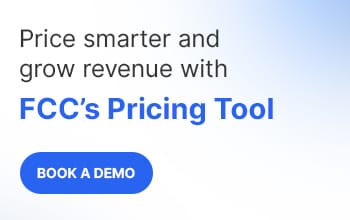Table of Contents
- What is psychological pricing?
- What are examples of psychological pricing?
- How does psychological pricing work?
- Why do companies use psychological pricing?
- What are the different types of psychological pricing?
- Things to consider before implementing psychological pricing
- Conclusion
What is Psychological Pricing?
Psychological pricing is a strategic approach used by businesses to influence consumer perception and behavior through pricing tactics.
By setting prices just below whole numbers (e.g., $9.99 instead of $10), companies create an illusion of a better deal, tapping into the consumer's emotional response rather than rational thinking. This technique leverages the left-digit effect, where consumers focus more on the first digit of the price, perceiving it as significantly lower.
Psychological pricing strategies can involve using charm prices, odd-even pricing, and price anchoring to enhance the perceived value and attractiveness of products or services. Businesses may also implement tiered pricing to offer options at different prices, appealing to varying customer preferences and demands.
How does psychological pricing work?
Psychological pricing involves carefully selecting specific price points to influence consumer perceptions of value and affordability. While consumers may consider a combination of price, value, quality and quantity when making purchasing decisions, the complexity of evaluating these factors may lead them to rely on mental shortcuts.
Psychological pricing techniques use these cognitive biases to create a sense of urgency and exclusivity, triggering the response to purchase the item. For example, it involves techniques like odd-even pricing, where odd prices (e.g., $19.95) are perceived as bargains, and price anchoring, where a higher initial price makes subsequent prices seem reasonable.
Companies also create artificial time constraints, like limited-time offers, to induce a sense of urgency in customers, prompting quick decision-making.
What are the examples of psychological pricing?
Retailers commonly use psychological pricing methods to make products appear as a good deal. For instance, a clothing retailer might price a pair of jeans at $199 instead of $200. The left-digit bias makes $199 seem closer to $100 than $200, creating a perception of a lower price. It can make the jeans seem significantly cheaper, appealing to consumers who are more likely to purchase an item if they perceive it as a great deal.
Another example is wholesaler Costco, which uses bundle pricing by offering different products in bulk at a discounted price, making customers feel they are getting the best value.
What are the different types of psychological pricing?
Here are the different types of psychological pricing that retail stores can use:
- Charm Pricing: This involves setting prices just below a round number (e.g., $9.99 instead of $10) to make the price appear lower and more attractive to consumers.
- Price Anchor: This technique presents higher prices first, followed by a lower price, to make subsequent prices seem more reasonable, influencing consumers to perceive the lower retail price as a better deal.
- Odd-Even Pricing: This strategy uses odd numbers (e.g., $19.95) to create a perception of a bargain, as consumers are more sensitive to certain ending digits.
- Decoy Pricing: This involves introducing a third, less attractive option to make the first two options seem more appealing, guiding consumers towards a preferred choice.
- Centre-Stage Pricing: This technique places the most profitable or desired product in the center of a pricing list to draw attention and increase the likelihood of purchase.
Conclusion
Psychological pricing is a marketing strategy that involves setting product prices to appeal to consumers and influence purchasing decisions. By carefully selecting specific price points, businesses can increase consumer interest, expedite the decision-making process, boost sales and grow profit margins.
However, it is important to note that psychological pricing is not a guaranteed sales strategy. Misinterpretation by consumers or ineffective implementation can lead to unintended consequences. Therefore, it's essential to approach psychological pricing with careful consideration and strategic planning.
FAQ
Psychological pricing, a strategic pricing approach, involves tactics designed to influence consumer behavior. Studies have demonstrated that specific price formats can subconsciously impact customers and encourage purchases. Due to their low cost and ease of implementation, many businesses across various industries employ at least one psychological pricing tactic when setting or adjusting prices. These methods can be effectively combined with other pricing strategies to enhance their overall effectiveness.
Many companies use psychological pricing to influence customer decisions in their favor. For instance, Costco employs bundle pricing to attract customers. They often sell products in bulk at a lower per-unit price, such as a pack of 24 rolls of toilet paper for $19.99.
Similarly, Walmart is known for its aggressive use of odd pricing, particularly in its grocery section. Items are frequently priced at $2.99, $4.97, or other odd numbers to create a sense of a bargain. This strategy has been highly effective in attracting price-conscious potential customers.
Psychological pricing is a versatile strategy that can be employed by businesses across various industries. Some common types of companies that frequently utilize this tactic are retailers (from clothing stores to supermarkets), service providers (restaurants, hotels, and salons, etc), subscription-based businesses (streaming platforms, gyms, etc), and luxury brands (fashion, accessories, gadgets etc).

